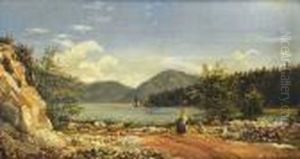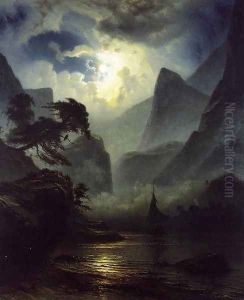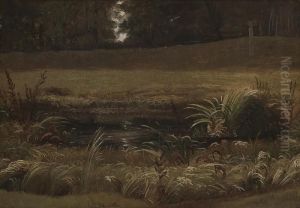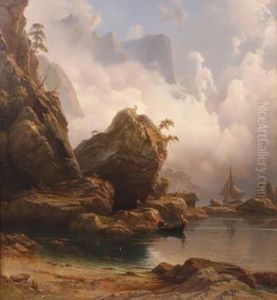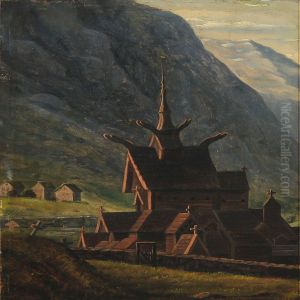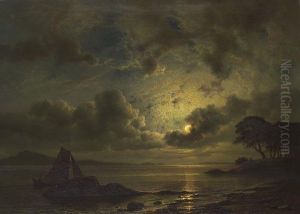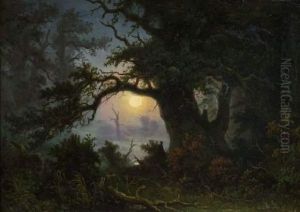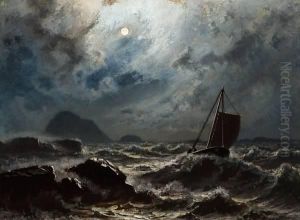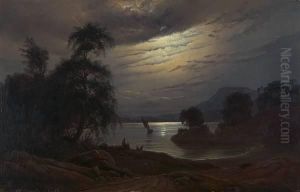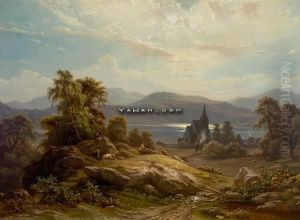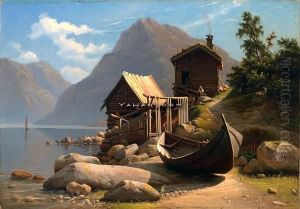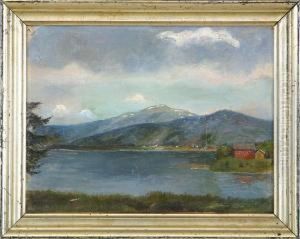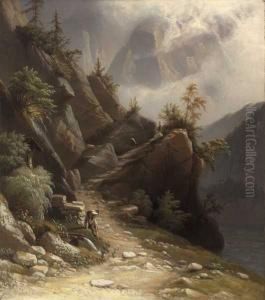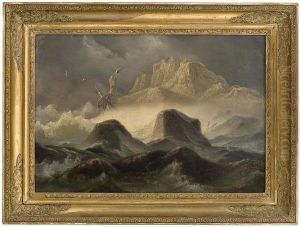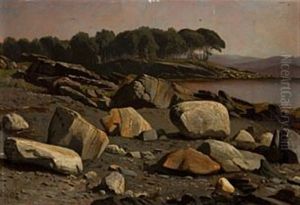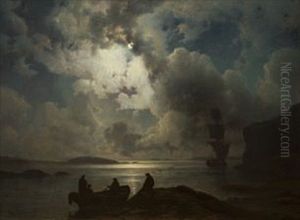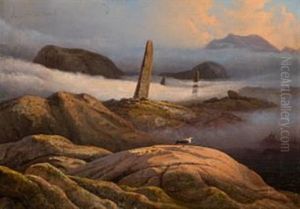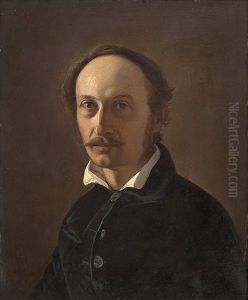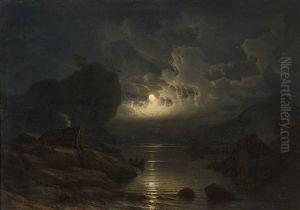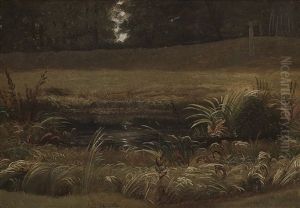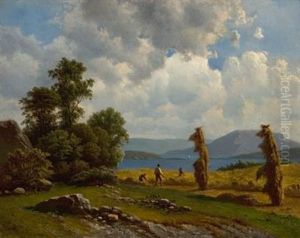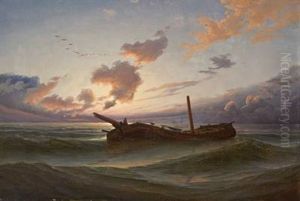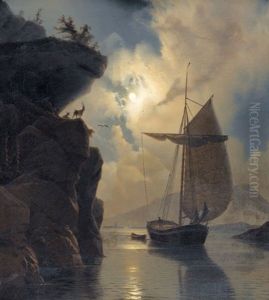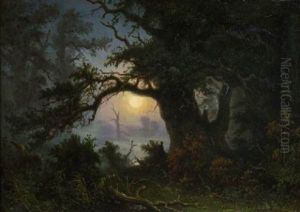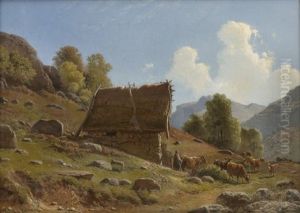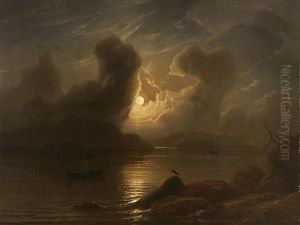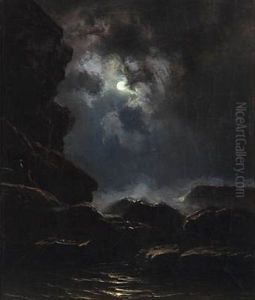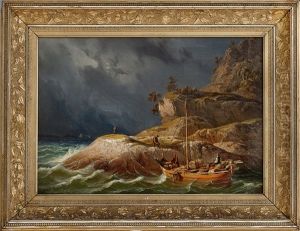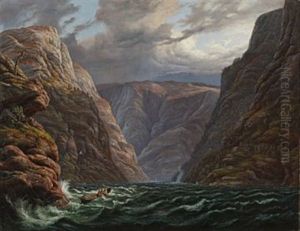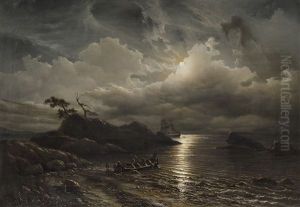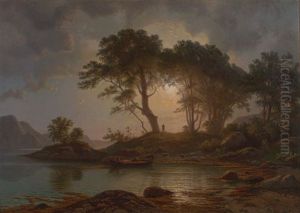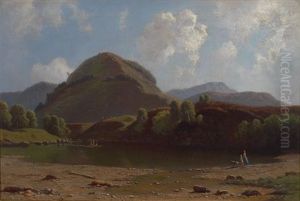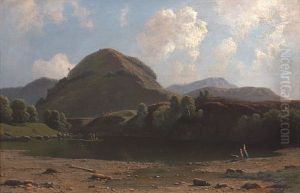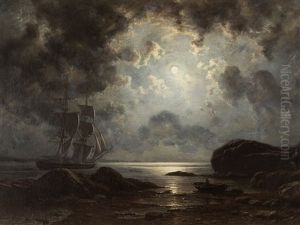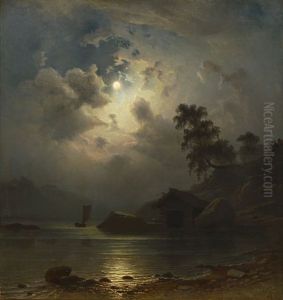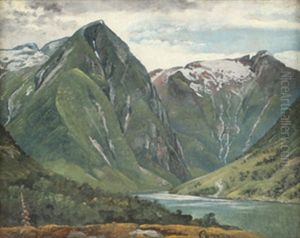Knud (Andreassen) Baade Paintings
Knud (Andreassen) Baade was a notable Norwegian painter, born on March 28, 1808, in Skinnarbøl, Norway. He is remembered for his contributions to the romantic movement in art, capturing the sublime and mystical aspects of nature within his works. Baade's journey into the world of art began at the Royal Drawing School in Christiania (now Oslo), where he honed his skills and developed a keen interest in landscape painting. His talent and dedication to his craft led him to further his studies abroad, which was a common practice among Scandinavian artists of the time seeking broader exposure and experience.
In 1829, Baade traveled to Germany, a hub for romantic landscape painting, where he was greatly influenced by the works of Caspar David Friedrich and other contemporaries who emphasized emotion and the inherent beauty in nature's ephemeral moments. This exposure was pivotal in shaping Baade's style and thematic choices. His paintings often depicted moody landscapes, characterized by dramatic lighting and a profound sense of melancholy and introspection, which resonated with the romantic era's fascination with nature's power and mystery.
During his career, Baade experienced periods of study and work in various European cities, including Dresden and Munich, which were centers for artistic development at the time. His time in Munich, in particular, was significant; the city's thriving artistic community and its focus on landscape painting provided an ideal setting for Baade to refine his approach to art. It was here that he produced some of his most memorable works, which captured the haunting beauty of Norwegian nature and historical scenes imbued with a sense of nostalgia and poetic solemnity.
Baade's contributions to Norwegian art were recognized in his time, and he became a respected figure among his contemporaries. However, it wasn't until after his death in Munich on November 24, 1879, that his work gained broader recognition for its emotional depth and technical mastery. Today, Knud Baade is celebrated as a key figure in the Norwegian romantic movement, with his paintings held in high regard and featured in collections both in Norway and internationally. His legacy is that of a painter who masterfully captured the ethereal and sublime aspects of the natural world, leaving a lasting impression on the history of Norwegian art.
